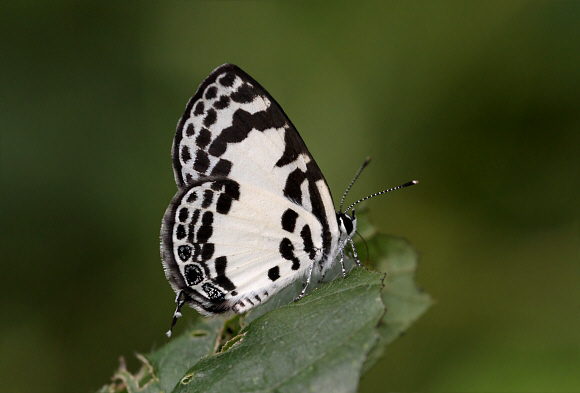
Introduction
The genus Tuxentius comprises of 10 species, all Afrotropical in distribution. On the upperside all species are white with black markings and without any trace of blue. The undersides are also white, marked with black spots and streaks which differ in configuration according to species.
Tuxentius carana is found across forested regions of Africa from Guinea to Congo, Central African Republic and northern Angola.
Habitats
This is a common forest species, found at elevations between sea level and about 1000m.
Lifecycle
The larval foodplants are unknown but it is suspected that carana utilizes trees or creepers in the family Rhamnaceae.
Adult behaviour
Males commonly swarm at damp patches of ground, often in the company of Azanus moriqua and Uranothauma falkensteini. Females are only seen on very rare occasions and are thought to spend most of their lives in the forest canopy.

